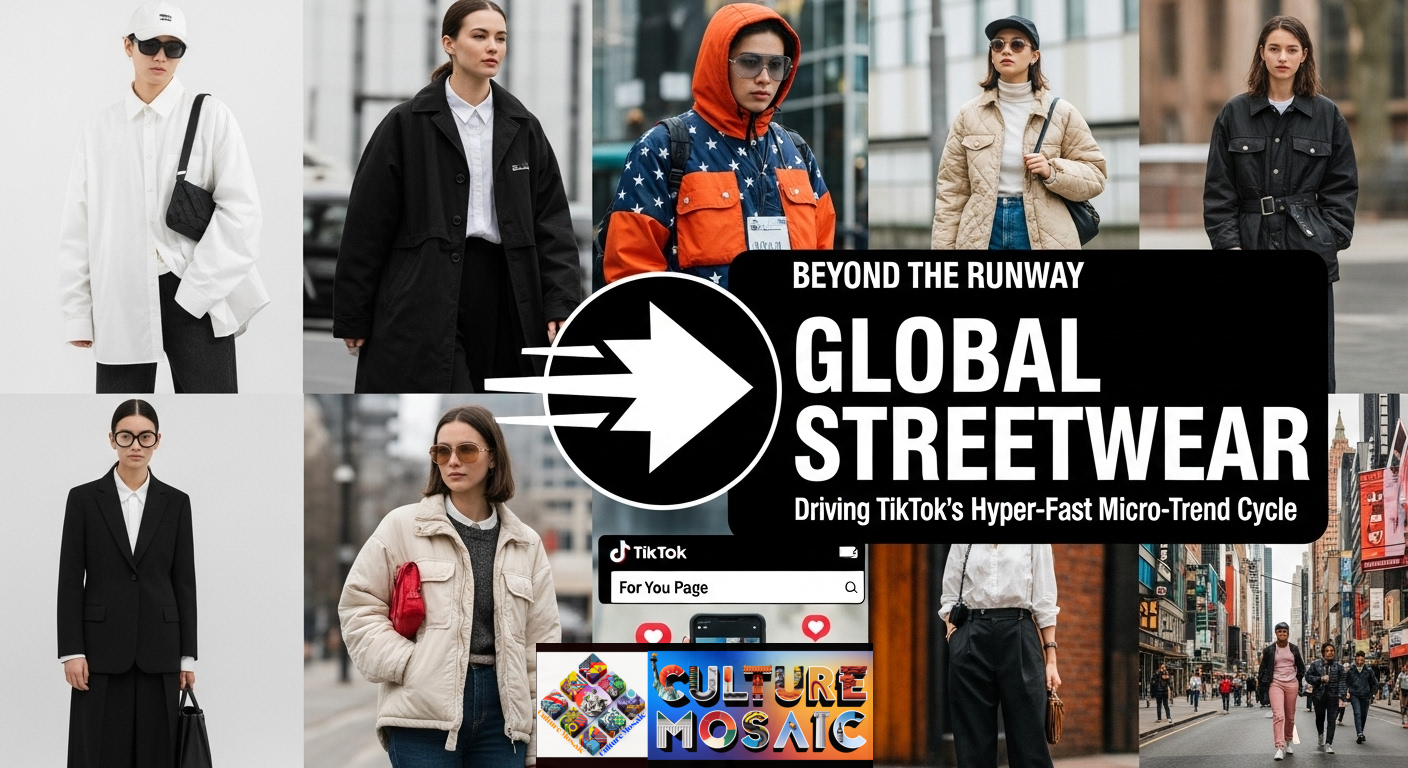Understanding Global Streetwear in Today’s Fashion Landscape
Global streetwear has completely changed the game. What used to take months or years to travel from one fashion capital to another now happens overnight. A teenager in Seoul posts a fit check, someone in Brooklyn recreates it by Tuesday, and by Friday, your local mall is selling a knockoff version.
This isn’t your older sibling’s fashion cycle anymore. Global streetwear has created a new system where trends don’t trickle down from runways. They bubble up from sidewalks in Tokyo, Berlin, and Lagos, get amplified on TikTok, and suddenly everyone in the US is searching for the same oversized graphic tee or technical cargo pants.
The numbers tell the story. The global streetwear market hit over $185 billion in 2024, and it’s projected to keep climbing. But what makes this movement different isn’t just its size. It’s how global streetwear operates as a genuine cultural exchange, pulling inspiration from cities that weren’t traditionally considered fashion capitals.
The New Fashion Capitals Shaping Global Streetwear
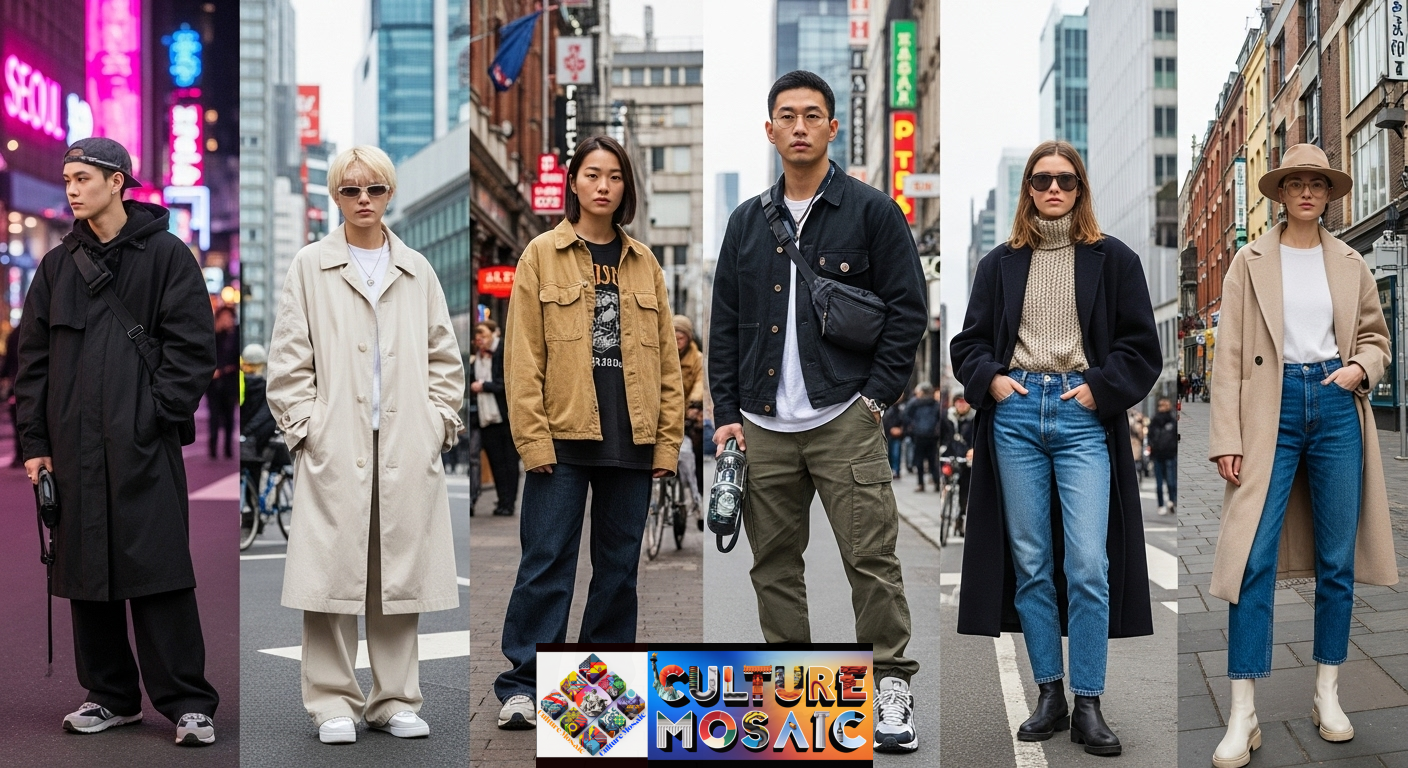
Paris, Milan, New York, and London used to own the conversation. Now, global streetwear has shifted attention to places like Seoul, Tokyo, Copenhagen, and even Melbourne.
Korean fashion, specifically, has had a massive impact on global streetwear in the US. The monochrome minimalism you see everywhere? That clean, oversized silhouette aesthetic? It came straight from Seoul’s streets, popularized through K-pop and Korean dramas. Young people in the US aren’t just copying celebrity looks anymore. They’re following everyday Korean fashion influencers who post daily outfit inspiration.
Tokyo’s contribution to global streetwear is equally important but operates differently. Japanese street fashion mixes technical gear with vintage Americana in ways that feel both nostalgic and futuristic. You’ll see someone wearing a 1990s graphic tee, paired with techwear pants and chunky sneakers. This blend has become a signature of global streetwear, especially among US Gen Z who value both function and personal expression.
European cities like Berlin and Copenhagen have brought their own flavor. Scandinavian minimalism mixed with underground rave culture creates a specific aesthetic that US fashion lovers call “European cool.” It’s understated but intentional, focusing on quality fabrics and clean lines rather than obvious branding.
From Niche to Normal: The 90-Day Micro-Trend Lifecycle
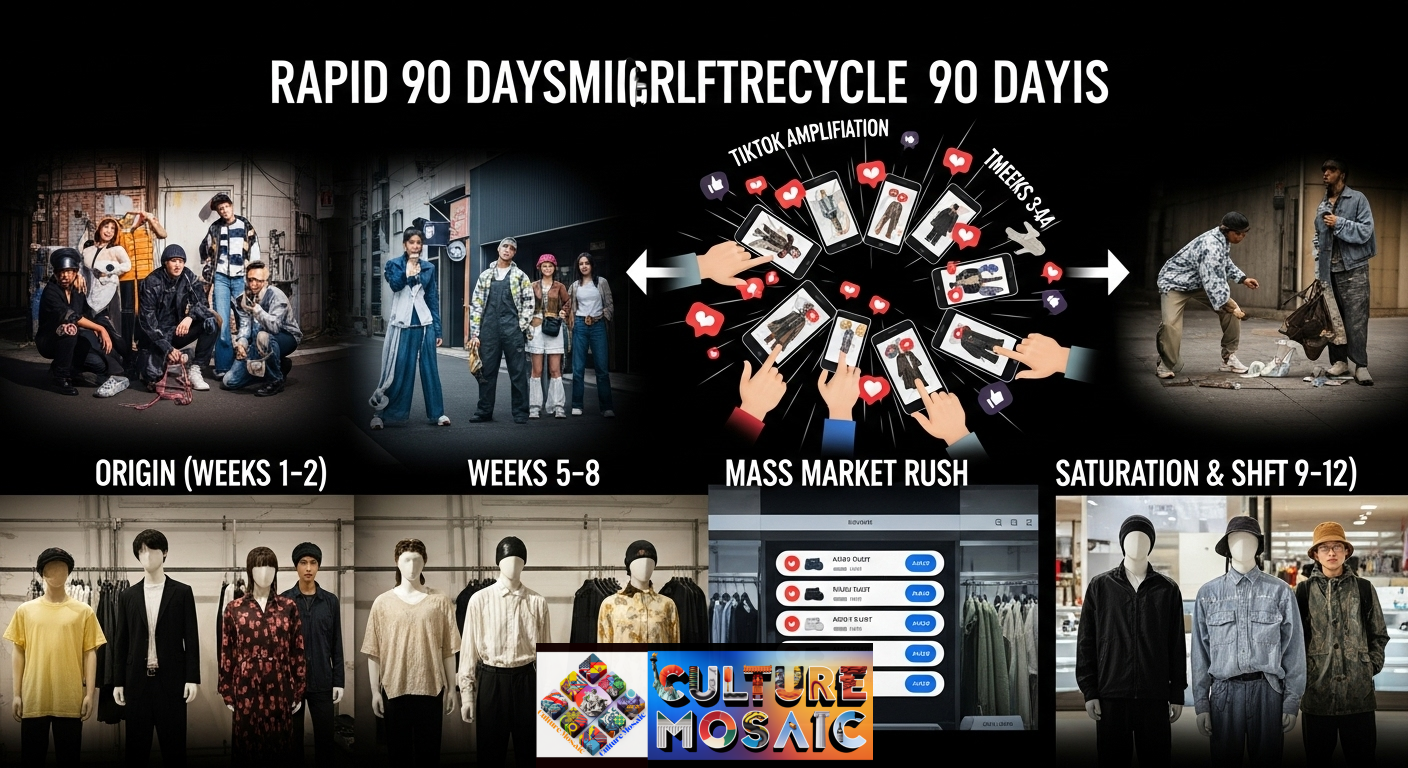
Here’s where global streetwear gets wild. Trends that used to last a season now have a shelf life of about three months. Let me walk you through how this actually works.
Week 1-2: The Origin
A micro-trend starts in a specific community or location. Maybe it’s the way Tokyo teens are styling oversized blazers with bike shorts. Or perhaps it’s a specific colorway of sneakers that was only released in Seoul. At this point, it’s genuinely niche. Only fashion enthusiasts who follow international accounts even know it exists.
Week 3-4: The TikTok Amplification
Someone with a decent following posts about it. The algorithm picks it up. Fashion TikTok does what it does best. Suddenly, creators are making “how to style” videos, “where to buy” guides, and “dupe” alternatives. The micro-trend is no longer niche. Global streetwear has entered its viral phase.
Week 5-8: Mass Market Rush
Fast fashion brands and even mid-tier retailers are watching these same TikTok feeds. They move fast. Really fast. Within weeks, versions of that trending item appear on websites and in stores. The original might have been a limited-edition piece from a small Japanese brand. Now, similar versions are available at accessible price points across the US.
Week 9-12: Saturation and Shift
By month three, everyone has it. The trend feels overexposed. The same fashion community that elevated it is now posting “what’s next” content. Global streetwear has already moved on to the next thing, and the cycle repeats.
This speed is what makes global streetwear simultaneously exciting and exhausting. You’re never bored, but you’re also never settled.
Drop Culture and the Psychology of Scarcity
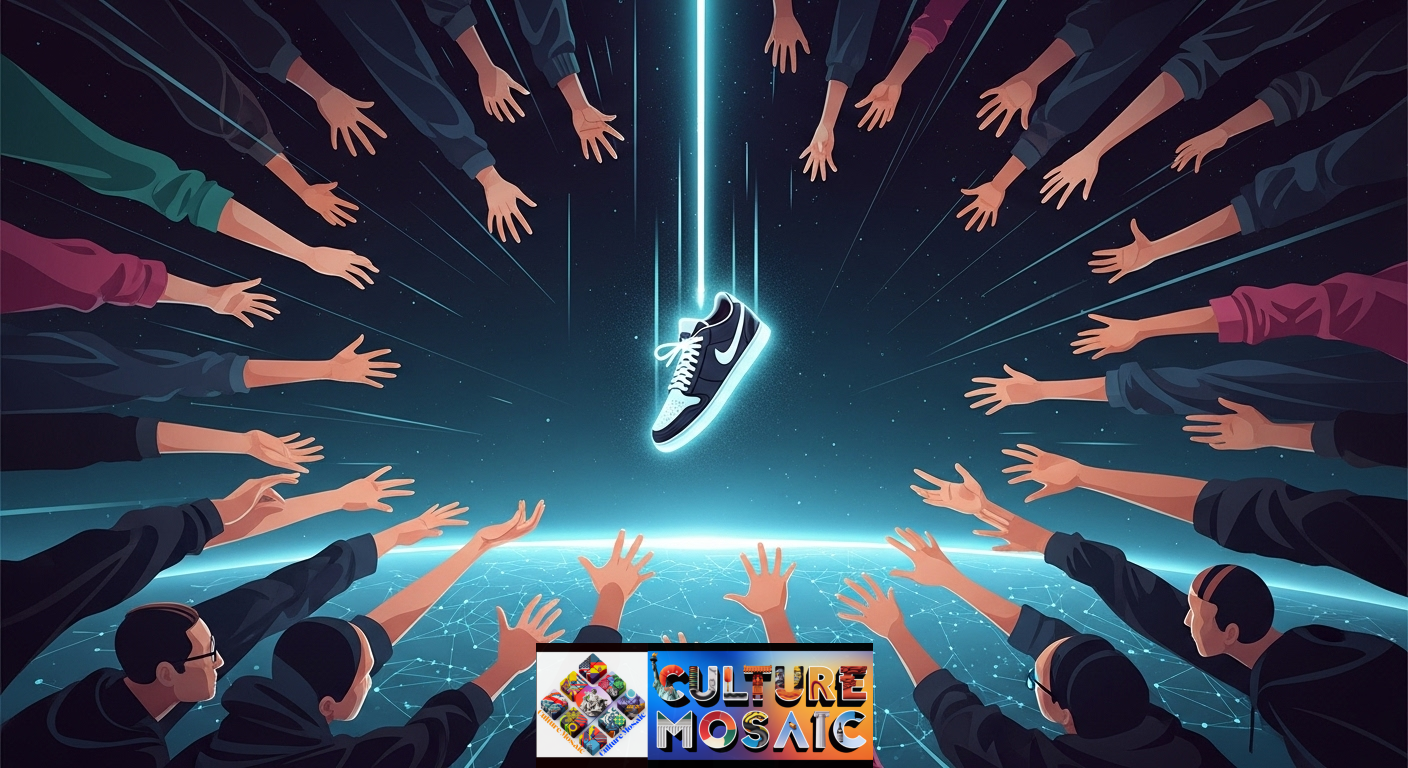
One of global streetwear’s most powerful tools is drop culture. If you’ve ever set an alarm for 3 AM to try to buy a limited-edition hoodie, you know exactly what I’m talking about.
Brands operating in the global streetwear space learned something important: scarcity creates desire. Instead of keeping items in stock year-round, they release small quantities at specific times. These drops happen globally, which means a kid in Kansas is competing with someone in Singapore for the same piece.
This model came from skateboarding and hip-hop culture but got refined and expanded by brands like Supreme, Palace, and later, international brands across Asia and Europe. Now, even mainstream brands use drop strategies because they’ve seen how effective it is within global streetwear.
The psychology works on multiple levels. First, there’s the obvious appeal of exclusivity. Wearing something that only a few thousand people worldwide own feels special. Second, there’s the community aspect. People who successfully get drops feel like they’re part of an in-group, connected to other global streetwear enthusiasts across continents.
Third, and this is crucial, drops create content. Every release becomes an event. People post their cops, their Ls (losses), their unboxing videos. This constant content keeps global streetwear visible and relevant in social feeds, which then attracts more people into the cycle.
Regional Styles Becoming Global Streetwear Staples
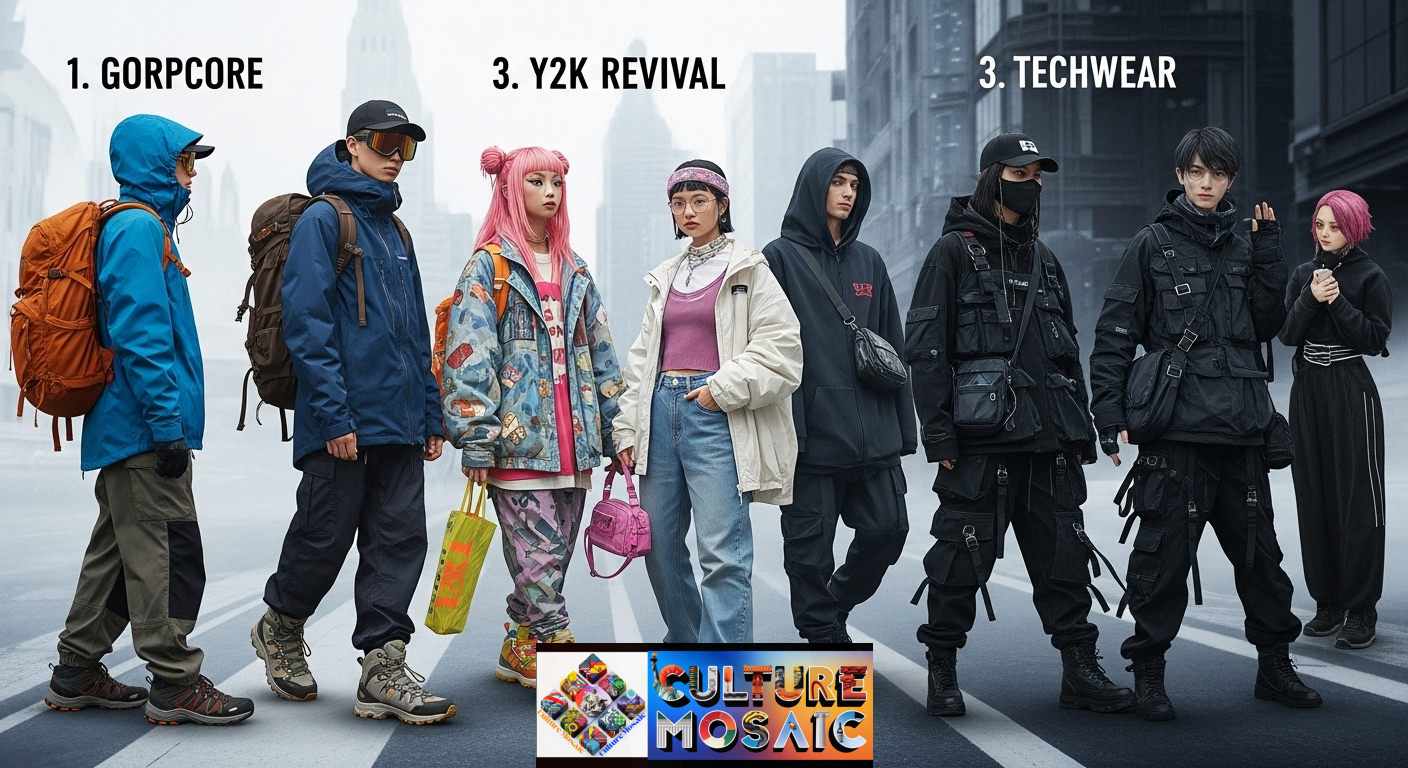
Let’s talk about specific aesthetics that traveled from local scenes to become fixtures in US closets.
Gorpcore started as genuine outdoor gear worn by hikers and climbers. It got picked up by fashion communities in European cities, remixed into streetwear contexts, and suddenly, technical Patagonia jackets and Salomon sneakers became global streetwear essentials. What was practical became fashionable, and what was niche became everywhere.
Y2K revival technically started in the US, but global streetwear gave it new life by pulling in how different countries experienced the early 2000s. Japanese Harajuku’s version of Y2K looks different from Seoul’s, which looks different from Berlin’s. All these interpretations are mixed in the US market, creating something richer than a simple nostalgia trend.
Techwear, the all-black, extremely functional, almost dystopian aesthetic, came primarily from Japanese and Korean designers who took inspiration from anime, gaming, and actual technical outdoor gear. It entered global streetwear gradually through niche online communities, then exploded when the right influencers started showcasing it.
Each of these shows how global streetwear doesn’t just copy. It remixes, recontextualizes, and recirculates styles across borders until something new emerges.
The TikTok Effect on Global Streetwear Speed
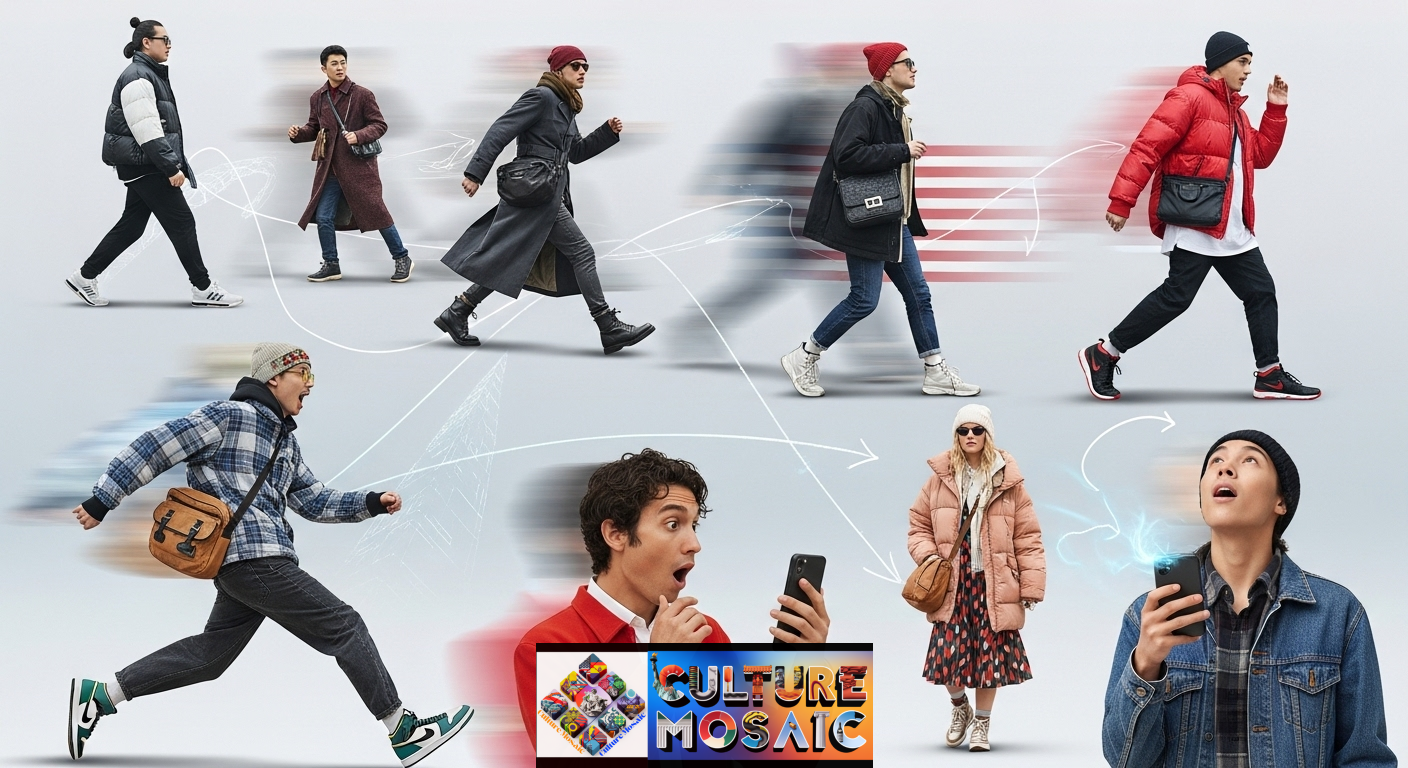
TikTok didn’t create global streetwear, but it put the entire movement on fast-forward. The platform’s algorithm doesn’t care about traditional fashion authority. A 17-year-old in Busan can have as much influence as a fashion editor in Manhattan. Maybe more.
This democratization accelerated how global streetwear trends move. Before TikTok, you needed to follow specific blogs, forums, or Instagram accounts to track international fashion. Now, the algorithm just serves it to you. You don’t have to seek out global streetwear content. It finds you.
The format matters too. TikTok’s short videos are perfect for outfit showcases. No lengthy blog posts or professional photography needed. Just good lighting, a decent phone camera, and actual style. This accessibility means more voices contribute to global streetwear conversations, which means more trends emerge, which means the cycle speeds up even more.
Hashtags like #GlobalStreetwear, #KoreanFashion, #TokyoStyle, and countless others create easy pathways for trends to cross borders. A video tagged #GlobalStreetwear might show someone in Germany styling vintage Levi’s with contemporary Korean accessories. Someone in Texas sees it, recreates their version, and adds their own local twist. That video inspires someone else. The cycle continues, each iteration slightly different but connected to this larger global streetwear conversation.
The Sustainability Problem Nobody Wants to Address
Here’s where global streetwear faces its biggest contradiction. The movement started with values around authenticity, quality, and cultural appreciation. Many global streetwear brands emphasize craftsmanship and timeless design. The problem? The micro-trend cycle it fuels creates the exact opposite behavior.
When trends change every 90 days, people buy more frequently. Even if individual global streetwear pieces are high quality and designed to last, the social pressure to stay current encourages constant consumption. That limited-edition drop you waited months for? It might feel outdated by next season.
Fast fashion brands have gotten incredibly efficient at copying global streetwear trends. They see what’s viral on TikTok and produce similar items quickly and cheaply. This accessibility is good for people who can’t afford $200 hoodies. But it creates an environmental nightmare. Lower-quality versions of global streetwear aesthetics get worn briefly, then discarded when the next micro-trend hits.
Some brands within global streetwear are trying to address this. They’re using sustainable materials, offering repair services, and creating pieces that transcend trends. But the fundamental tension remains: how do you maintain the excitement and newness that makes global streetwear appealing while encouraging people to buy less and wear things longer?
The resale market offers one solution. Platforms like Grailed, Depop, and StockX let global streetwear pieces circulate rather than ending up in landfills. That limited-edition jacket can have multiple owners over its lifetime. But resale only works if people actually choose to sell rather than hoard or discard.
This isn’t a problem global streetwear can solve alone. It requires changes in how we think about fashion consumption overall. But given how influential global streetwear has become in shaping trends, the movement has a responsibility to push harder on sustainability.
How Global Streetwear is Redefining Fashion Authority
Traditional fashion gatekeepers are losing relevance, and global streetwear is part of why. You don’t need a fashion degree or industry connections to influence what people wear. You just need genuine style and an internet connection.
This shift has created new types of fashion authorities. A vintage shop owner in Melbourne documenting daily fits. A student in Seoul shows how to style affordable pieces. A dancer in London mixing sportswear with formal elements. These voices make up the actual conversation around global streetwear, and their collective influence rivals traditional fashion media.
Brands have noticed. Instead of only working with established fashion editors and celebrities, global streetwear brands partner with micro-influencers and community figures. They understand that authenticity matters more than follower count. Someone with 5,000 engaged followers who genuinely loves the brand creates more value than a celebrity posting once for a check.
This democratization also means global streetwear evolves faster. With more voices contributing, more ideas are circulating, more remixes happening, and more innovation occurring. The downside? It’s harder to predict what’s next because influence is so distributed.
The Business Side of Global Streetwear
Let’s talk money. Globalstreetwear isn’t just a cultural movement. It’s an enormous industry that’s fundamentally changed how fashion businesses operate.
Traditional fashion worked on seasonal collections released months in advance. Global streetwear brands often work on much shorter cycles, releasing new pieces every few weeks or months. This keeps customers engaged and coming back, but it requires different supply chain management and design processes.
Many successful globalstreetwear brands started small. A designer making limited runs, selling through their own website or a single stockist. Social media lets them build direct relationships with customers globally without needing traditional retail partnerships. As they grew, they maintained this direct-to-consumer approach even as they added retail partners.
Collaborations are huge in global streetwear. When a streetwear brand partners with a sportswear giant or a luxury house, it creates buzz, brings together different customer bases, and generates significant sales. These collaborations also validate global streetwear as a legitimate fashion category, not just youth culture.
The investment world has noticed too. Major fashion conglomerates have acquired successful global streetwear brands. Private equity firms are backing emerging ones. This capital influx professionalized parts of the industry but also created tension around maintaining authenticity while scaling.
What’s Next for Global Streetwear
Predicting fashion is always risky, but certain patterns suggest where global streetwear might head.
First, expect more regional styles to break through. We’ve seen Korean and Japanese influences dominate, but fashion communities in African cities, Southeast Asian countries, and Latin America are developing distinct aesthetics. As they gain more visibility on global platforms, these styles will influence the broader globalstreetwear conversation.
Second, technology will play a bigger role. We’re already seeing digital fashion and virtual sneakers. Some global streetwear brands are experimenting with NFTs, augmented reality try-ons, and other tech integrations. Whether these stick depends on whether they solve real problems or just add complexity.
Third, the tension between speed and sustainability will intensify. Younger consumers genuinely care about environmental impact. Globalstreetwear brands that figure out how to maintain excitement while promoting longevity and sustainability will have a significant advantage.
Finally, the definition of streetwear itself might expand. Global streetwar has already incorporated elements from athletic wear, outdoor gear, and traditional garments. As more cultural influences mix, the category could become so broad that it loses meaning. Or it might evolve into something new entirely.
Why Global Streetwear Matters Beyond Fashion
At its core, global streetwear represents something bigger than clothes. It’s about young people worldwide connecting over shared aesthetics despite different backgrounds. It’s about local cultures getting recognized and respected globally rather than being appropriated by major brands.
The way global streetwer operates—valuing authenticity, rewarding creativity, enabling direct connections between makers and wearers—suggests alternative models for how creative industries might work. Not everything needs to flow through traditional gatekeepers and established institutions.
That said, global streetwear isn’t perfect. It has problems with accessibility, sustainability, and occasionally cultural appropriation. But the conversation happens openly. When globa streetwear communities identify issues, they discuss them, which is more than you can say for some parts of fashion.
Whether you’re deeply involved in globalstreetwear or just someone who’s noticed your niece suddenly dressing differently, understanding this movement helps make sense of how culture moves today. It’s fast, it’s global, it’s democratic, and it’s constantly evolving.
The clothes are just the visible part. The real story of globalstreetwear is about connection, creativity, and how young people worldwide are building communities around shared values and aesthetics. That matters more than any individual trend.
Frequently Asked Questions
What exactly is global streetwear?
Global streetwear refers to street-inspired fashion that draws from diverse international urban cultures rather than just Western influences. It combines comfortable, functional pieces with strong visual identities, pulling aesthetics from cities like Seoul, Tokyo, Berlin, and beyond. Unlike traditional fashion, globalstreetwear spreads rapidly through social media and emphasizes cultural exchange, authenticity, and community over runway trends.
Why do global streetwear trends change so quickly now?
Social media platforms, especially TikTok, have accelerated the trend cycle dramatically. A style can go from niche to mainstream in weeks because content spreads globally and instantly. Fast fashion brands monitor these platforms and quickly produce similar items, making trends accessible to mass markets rapidly. This combination of viral visibility and quick production has shortened the micro-trend lifecycle to roughly 90 days.
Is global streetwear just expensive fashion for young people?
Not necessarily. Global streetwar spans all price points. While some limited-edition pieces from hype brands cost hundreds or thousands of dollars, the aesthetic itself is accessible. Many people create globalstreetwear looks by mixing affordable basics with thrifted items or mid-range pieces. The focus is more on creative styling and cultural awareness than on spending money on expensive logos.
How is globalstreetwear different from fast fashion?
Globalstreetwear as a movement often emphasizes quality, authenticity, and cultural significance, with many brands producing limited quantities and using better materials. However, fast fashion brands frequently copy global streetwer aesthetics and produce cheaper versions. The confusion comes from fast fashion’s success at mimicking global streetwar styles, making it hard for consumers to distinguish between authentic global streetwear pieces and mass-market imitations.
Can global streetwear ever be sustainable, given how fast trends move?
This is the central challenge. Some global streetwer brands are working toward sustainability through quality materials, repair programs, and timeless designs. The resale market also helps by extending garment lifecycles. However, the micro-trend culture that surrounds global streetwear contradicts sustainable consumption. Real progress requires both brands producing more responsibly and consumers shifting mindsets from chasing every trend to building personal style with longer-lasting pieces.

